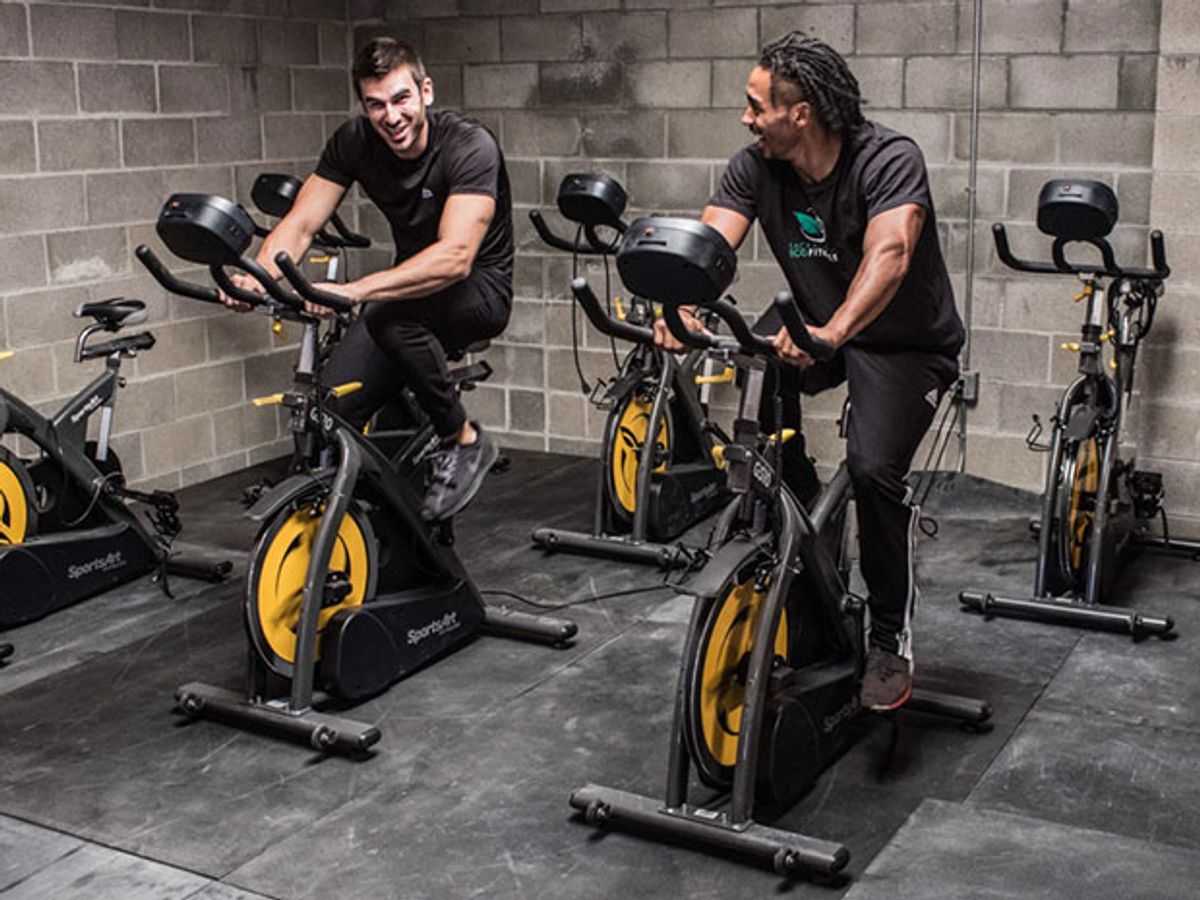On 18 December, a new gym opened in downtown Sacramento, California. When its members attend a cycling class, they’ll be riding on expensive exercise bikes that generate electricity, help reduce carbon dioxide emissions, and maybe give them some motivation for pedaling harder.
TheSacramento Eco Fitness gym estimates that it will recover the approximately US $26,000 price tag for its 15 eco-cycles in one year.
Yet in a 2011 IEEE Spectrum feature, mechanical engineering consultant Tom Gibson estimated that a human can only generate about 50 to 150 watts of electricity during an hour of cycling—hardly enough to power a gym. He concluded that electricity-generating bikes were a “marketing gimmick” and that it would take “decades” for gyms to recuperate the initial investment.
Eco Fitness founder José Aviña sees things a little bit differently. “We want [our members] to be proud of the hard work they put in every time they show up to cycle,” he writes in an email.
The 15 electricity-generating bikes come from SportsArt, which began operations in Taiwan in 1978.
The ECO-POWR SportsArt bikes look similar to traditional bikes, but something changes when you plug them into a 120V wall outlet and start cycling. First, an internal generator produces low-voltage AC from the pedaling motion. The voltage is then boosted to a higher level and converted to DC. Then it’s converted to a 60-hertz AC waveform and filtered. Any surplus electricity left after powering the bike—about 74 percent of it—can go back to the power grid.
The extra tech does come at a price: SportsArt bikes can be more expensive than some traditional models. The SportsArt ECO-POWR cycles and elliptical machines range between $2,795 and $7,395 list before bulk discounts, according to a commercial pricing sheet from SportsArt. The G510 spinning bikes that Eco Fitness uses cost about $1,700 each ($2,795 list), but Aviña says he could have gotten the competing Sole Up-Right Cycle on sale for $1,299 (regular $1,799) before sales tax with free shipping.
He decided to purchase the SportsArt ECO-POWR bikes because they include an app that tracks how many watts a cycler generates. The app lets cyclers compare their gym’s wattage output to the output from other gyms in Europe, Asia, and Canada.
He thinks this knowledge will drive gym members to compete and work harder. And in terms of cost—he thinks there are several things that will let the gym get its money back.
He admits that yes, membership fees are higher. Eco Fitness costs at least $80 per month, and he says that while it’s cheaper than nearby boutique gyms that charge $150 or more, big-box gyms as close as 2.5 kilometers away have “much lower” membership costs.
But he still thinks the electricity from the bikes would go a long way towards the gym’s sustainability strategy, because for safety the city of Sacramento would require a permit for installing solar panels and there is limited roof space even if panels were approved.
The facility will offer three 45-minute cycle classes a day for 12 people. He estimates each class would produce a surplus between 400 and 800 watts during that period as long as everybody puts in similar effort. That would be almost enough to cover the coffee machine, two LED TVs, and two laptops.
He says that besides a 24-hour streelight outside the building, the gym keeps its electricity usage low. The building has a skylight: which reduces the need for artificial light. It isn’t open 24 hours, and staff members unplug tech and exercise machines when they’re not in use. During winter or summer months the gym would need to use AC or a heat lamp, but the gym could offset these needs with solar panels in the future.
SportsArt vice president Ivo Grossi says the company targets mid-size boutique gyms because they can are willing to test innovations. Big chains—such as Crunch or Life Time—wouldn’t go for a product like the SportsArt bikes yet. “We’ll get there,” he says.
Grossi says that the bikes are in the same range as products by Life Fitness, Matrix Cardio, and Precor—the “cost is the same” as a “top-notch” commercial bike. SportsArt does this by sacrificing a 6 to 8 point margin on gross profits.
BeachFit, a small chain in the United Kingdom, has three facilities with SportsArt ECO-POWR bikes. The gyms are analyzing the exact energy effects of the SportsArt bikes, but owner Paul Crane says energy bills have gone down and membership has increased—particularly among 20-30 year olds—since the newest facility opened in Lancing, West Sussex in June 2015.
The BeachFit gyms have a membership fee of about £30-35 ($40-$45) per month. They are encouraging members to sign up by offering an incentive: for every 500 watts of electricity a member contributes they get a 5 percent discount on the membership fee, up to 20 percent off.
“At the moment, the energy produced is small,” Crane says, “but it’s making a difference.”
Greg Kremer, a mechanical engineer at Ohio University who works on human-powered vehicles, writes that although there have been some technological advancements in efficiency, output electricity is always limited by human input, the bike’s power requirements, and any energy losses of the power-generating equipment. He also writes that “utilization rates of exercise equipment vary over time of day and season, but are much lower on average than most people would like to admit.”
“If you want to save energy and get exercise,” he writes, “ride a bike or walk to work or school—you get the exercise, and the energy use is directly avoided. [That’s] real savings.”



